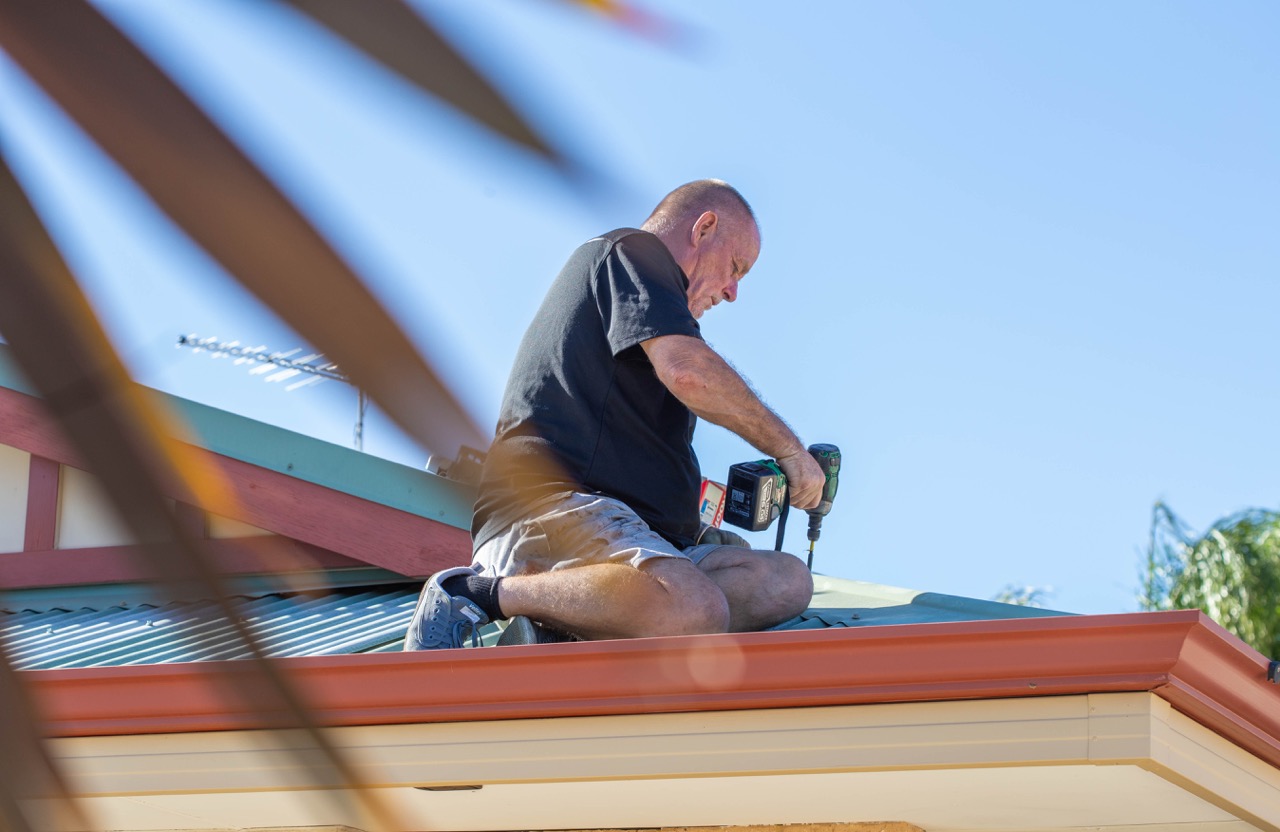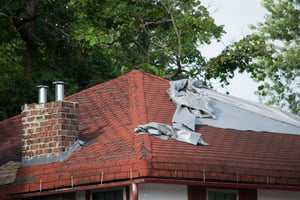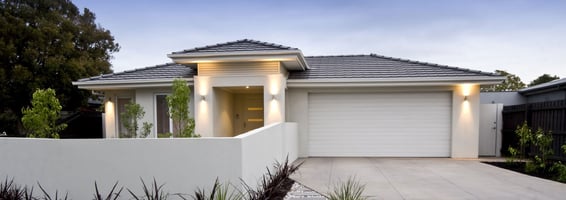Roof leaks are more than just a minor inconvenience; they can lead to significant damage and costly...

Emergency Roof Repair: How to Handle a Damaged Roof
When it comes to your home, your roof is one of the most important elements in protecting you and your family from the elements. But what happens when that protection is compromised due to a damaged roof? A damaged roof can quickly escalate from a minor issue to a major emergency, causing damage to your property and putting your family's safety at risk.
Whether it's due to extreme weather conditions, aging, or other factors, it's important to address a damaged roof immediately. In this blog post, we'll cover everything you need to know about emergency roof repair and how to handle a damaged roof. Knowing when to call a professional is also essential, especially for severe or extensive damage that requires a skilled repairer. By taking these steps, you can ensure the safety of your home and family and avoid costly and dangerous roof repairs.
Signs of a Damaged Roof
When it comes to your home's roof, identifying signs of damage early on is key to preventing a minor problem from turning into a major one. Here are some of the most common signs of a damaged roof:
Visible Damage
The most obvious sign of roof damage is visible wear and tear. Check for cracked, curled, or missing shingles or tiles. Look for damage around roof penetrations, such as chimneys, vents, and skylights. If you notice any of these issues, it's important to address them as soon as possible to prevent further damage.
Indoor Signs of Damage
While some signs of roof damage may be visible from the outside, others can only be detected from the inside of your home. If you notice any of the following signs, it's likely that your roof is damaged and in need of repair.
- Water Stains: One of the most common indoor signs of a damaged roof is water stains. Water stains are often seen as discoloured patches on your ceiling or walls and are caused by water leaking through your roof. If left unchecked, these stains can grow in size and spread to other areas of your home, causing even more damage. It's important to address water stains as soon as possible to prevent further damage to your home.
- Dampness: If you notice any dampness on your walls or ceiling, this could also be a sign of a damaged roof. Dampness is often accompanied by a musty odour and can indicate a leaky roof that is allowing moisture to seep into your home. Over time, this dampness can lead to mould growth, which can cause health problems for you and your family.
- Mould and Mildew: Mould and mildew are often the result of prolonged exposure to moisture and can be a sign of a damaged roof. If you notice mould or mildew in your attic or on your walls, it's important to address the issue as soon as possible. Not only can mould and mildew cause health problems, but they can also weaken the structural integrity of your home.
Roof Ageing
Roofs are designed to last for many years, but over time they will naturally begin to deteriorate. Signs of an ageing roof include granule loss on asphalt shingles, fading or discolouration, and a sagging or uneven roofline. If your roof is showing signs of ageing, it's important to take action to prevent further damage. To find out how long your particular roof is expected to last look at our related blog linked here: *how to determine the life expectancy of your roof*
Handling Emergency Situations
If you notice any of these signs of roof damage, it's important to take action immediately. In emergency situations, such as a major storm, it's important to assess the damage and take measures to protect your home from further damage. Cover any holes or openings with a tarp or plastic sheeting and remove any debris that could cause further damage. However, it's important to prioritise your safety and to not attempt any repairs on your own if it puts you in danger. In such situations, call a professional for assistance.
Assessing the Damage
Once you have identified signs of a damaged roof, the next step is to assess the extent of the damage. This will help you determine if you need to repair or replace your roof, and it will also help you understand the scope of the repairs that are needed.
Safety Measures
Before you begin assessing the damage to your roof, it's important to take safety measures to protect yourself. Make sure you have a sturdy ladder that is tall enough to reach your roof safely. Wear slip-resistant shoes and work gloves to protect yourself from falls and sharp debris. If you're uncomfortable with heights or the extent of the damage, it's best to call a professional to assess the damage for you.
Tools Needed
To assess the damage to your roof, you'll need a few tools, including a flashlight, binoculars, a tape measure, and a camera. A flashlight will help you inspect your attic for signs of damage, while binoculars will help you inspect your roof from a safe distance. A tape measure will help you measure the size of the damaged area, and a camera will help you document the damage for insurance purposes.
Common Types of Roof Damage
There are many different types of damage that can occur to your roof, each with its own unique set of signs and symptoms. Here are some of the most common types of roof damage:
- Leaks: Leaks are often the result of damaged flashing, cracked or missing shingles, or a hole in the roof. Look for signs of water stains or dampness on your ceilings or walls, as well as wet insulation or mould growth in your attic.
- Wind Damage: Strong winds can lift or tear shingles from your roof, leaving it vulnerable to water damage. Look for missing or lifted shingles, as well as damage to your gutters or chimney.
- Hail Damage: Hail can cause dents or cracks in your shingles, which can weaken your roof over time. Look for small circular dents or cracks in your shingles or flashing.
- Tree Damage: Trees can cause significant damage to your roof, especially during storms. Look for broken or bent branches, as well as any debris or leaves on your roof.
Assessing the damage to your roof is an important first step in determining the best course of action for repairs. If the damage is extensive, it's best to call a professional to handle the repairs. A professional will have the tools and expertise necessary to assess the damage and provide you with the best solution for your damaged roof.
Emergency Repair Steps
In case of a damaged roof, taking quick and effective action can prevent further damage to your property. Here are the emergency repair steps you can take to protect your home or building until a professional roofer can arrive:
Gather Necessary Materials
Before you start repairing your damaged roof, it's important to gather all the necessary materials. You will need a ladder, safety harness, work gloves, roofing cement, roofing nails, and a tarp to cover the damaged area. It's important to note that you should never attempt to make repairs without the proper safety equipment, such as a ladder and safety harness. Additionally, it's recommended to have a helper on hand to assist you with the repair process.
Temporary Repair Methods
If you're dealing with a small leak or minor damage, you can use temporary repair methods to prevent further damage until a professional roofer can arrive. Here are some temporary repair methods you can use:
- Apply Roofing Cement: If you notice a crack or hole in your roof, apply roofing cement to the damaged area. Use a putty knife to spread the cement evenly over the damaged area, and then cover the area with a piece of metal flashing.
- Use Roofing Tape: For smaller cracks or leaks, roofing tape can be an effective temporary repair method. Clean the damaged area, apply the tape over the crack, and then press it firmly into place.
- Cover the Damaged Area with a Tarp: If you have a large hole or significant damage to your roof, cover the damaged area with a tarp to prevent water from entering your home or building. Make sure the tarp is secured tightly with roofing nails.
Temporary Waterproofing Techniques
In addition to temporary repair methods, you can use temporary waterproofing techniques to prevent further damage to your property. Here are some temporary waterproofing techniques you can use:
- Apply Waterproof Sealant: Apply waterproof sealant to the damaged area to prevent water from entering your home or building. Use a putty knife to spread the sealant evenly over the damaged area.
- Use a Roofing Membrane: Apply a roofing membrane over the damaged area to prevent water from entering your home or building. Cut the membrane to size, and then place it over the damaged area.
By following these emergency repair steps, you can prevent further damage to your property and protect your home or building until a professional roofer can arrive. Remember, temporary repairs should only be used as a short-term solution until a professional, trusted company like ‘Permacoat can assess and repair the damage to your roof.
Preventing Future Damage
Preventing future damage to your roof is just as important as addressing the current damage. Here are some tips on how to prevent future damage to your roof:
Regular Inspection and Maintenance
One of the best ways to prevent future damage to your roof is by regularly inspecting and maintaining it. A professional roofer can inspect your roof for signs of damage and make necessary repairs. It's recommended to have your roof inspected at least once a year, especially after extreme weather events like heavy rain or snow.
Common Causes of Roof Damage
Understanding the common causes of roof damage can help you prevent future damage. Here are some of the most common causes of roof damage:
- Weather: Extreme weather events such as heavy rain, strong winds, and hail can cause significant damage to your roof.
- Tree Damage: Overhanging trees can cause damage to your roof, especially during storms or high winds.
- Poor Installation: A poorly installed roof can lead to leaks and other damage.
- Lack of Maintenance: Neglecting to maintain your roof can lead to damage and costly repairs.
Tips for Preventing Future Damage
Here are some tips for preventing future damage to your roof:
- Trim Overhanging Trees: Trim any overhanging branches to prevent them from damaging your roof during storms or high winds.
- Keep Gutters Clean: Clogged gutters can cause water to pool on your roof, leading to damage.
- Hire a Professional: Hire a professional roofer to install, repair, and maintain your roof to prevent future damage.
- Regular Maintenance: Regularly inspect and maintain your roof to prevent damage and prolong its lifespan.
By following these tips, you can prevent future damage to your roof and avoid costly repairs in the future. Remember, regular maintenance and inspections are key to ensuring the longevity and integrity of your roof.
When to Call a Professional
While it's possible to handle some minor roof repairs on your own, there are times when it's best to call a professional. Here are some reasons why you should consider hiring a professional for your damaged roof:
Importance of Professional Repair
Professional roofers have the necessary skills, equipment, and experience to safely and effectively repair your damaged roof. They can identify the root cause of the damage and provide a long-term solution to prevent future issues. Professional repair can also help you avoid costly mistakes and potential safety hazards.
Signs that Professional Repair is Needed
Here are some signs that your damaged roof requires professional repair:
- Extensive Damage: If your roof has sustained extensive damage, it's best to hire a professional roofer to make repairs.
- Safety Concerns: If the damage is located in a hard-to-reach area, such as a steep slope or high up on the roof, it's best to hire a professional for safety reasons.
- Warranty Considerations: If your roof is still under warranty, hiring a professional is often necessary to ensure that the warranty remains valid.
Why Choose Permacoat
When it comes to professional roof repair, Permacoat is a trusted choice. Our team of experienced and skilled roofers can handle all types of roof damage, from minor leaks to extensive repairs. We use high-quality materials and proven techniques to ensure that your roof is repaired correctly the first time. Additionally, we offer competitive pricing, exceptional customer service, and a satisfaction guarantee. Choose Permacoat for all your damaged roof repair needs.
If you experience a damaged roof due to an emergency situation, prompt attention is crucial to avoid further costly and hazardous issues. Signs of roof damage, such as visible damage, indoor signs, and ageing roofs, should be assessed immediately. Gathering necessary materials and performing temporary repair methods, including temporary waterproofing techniques, can help prevent further damage while waiting for a professional to arrive. Safety measures should always be taken when dealing with roof damage. Permacoat can provide professional repair services to address extensive damage, safety concerns, and warranty considerations. It's vital to know when to call a professional, as ignoring a damaged roof can lead to water and structural damage. Protect your home and family by following the steps outlined in this article and contacting Permacoat for any emergency repair needs.


